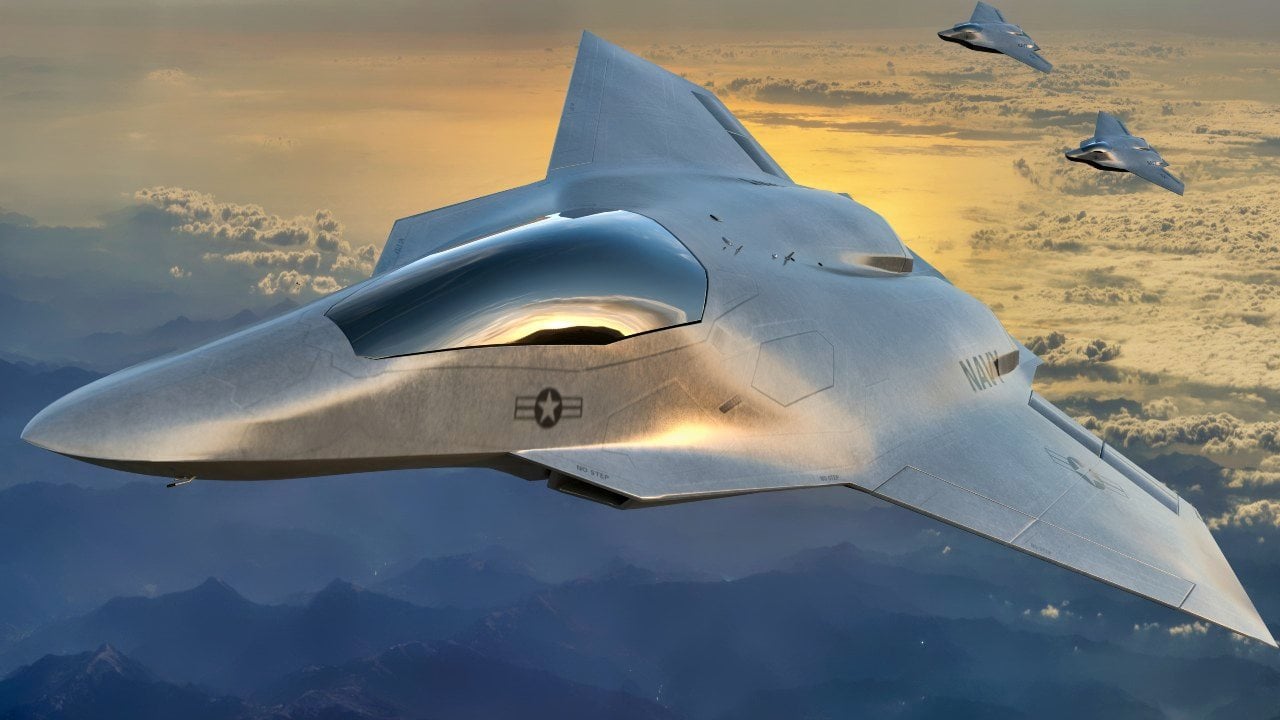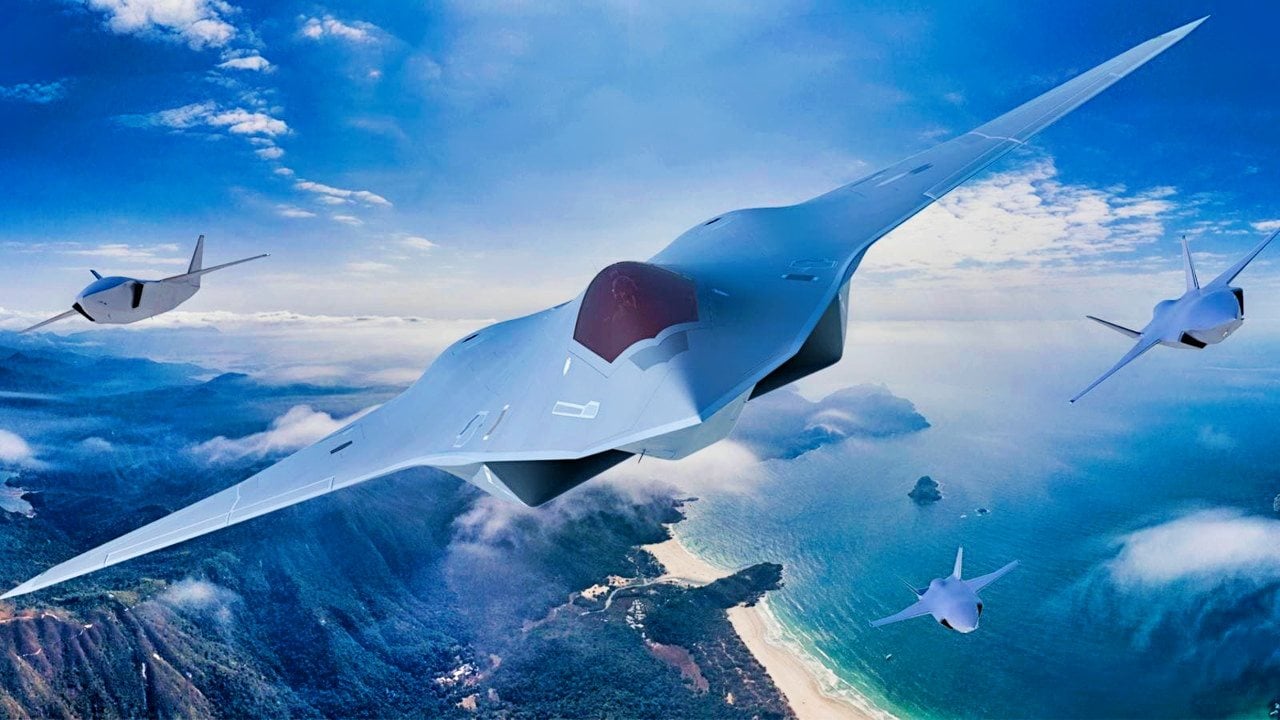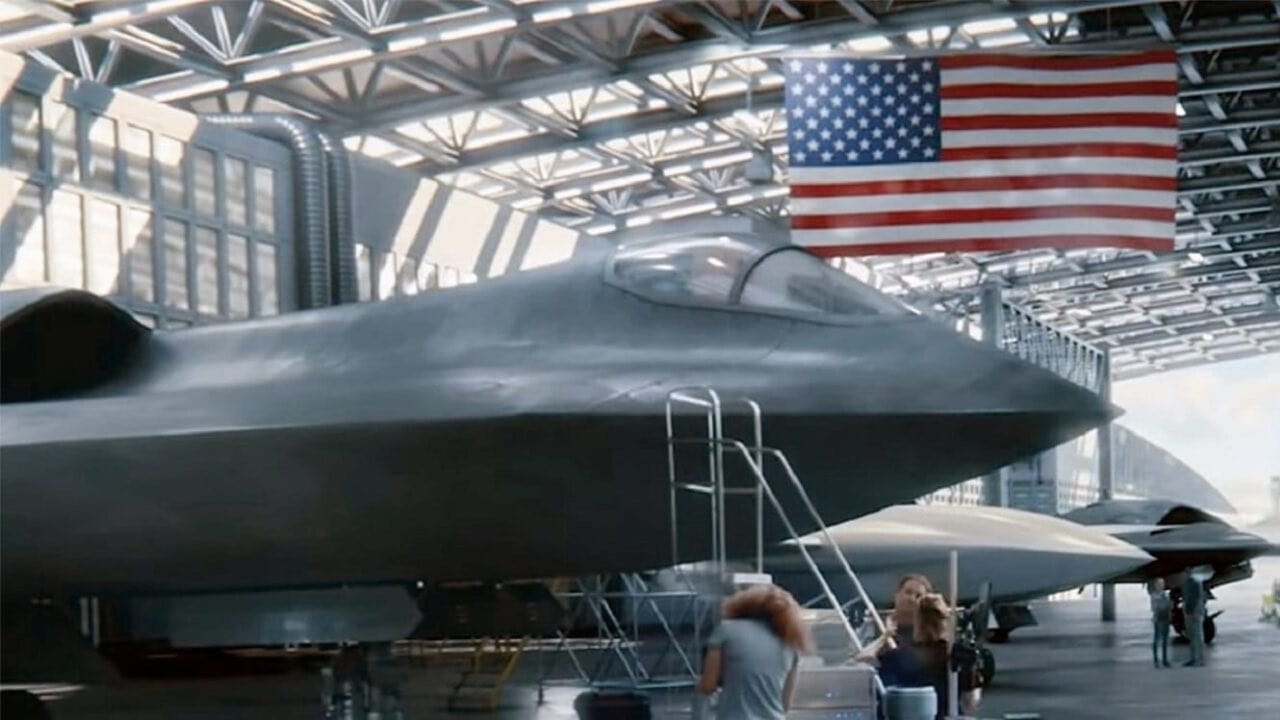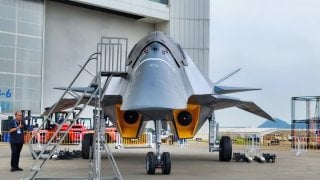China's 'NGAD' White Emperor 6th Generation Fighter Is a Problem for the Air Force
China’s Aviation Industry Corporation of China (AVIC) recently unveiled the White Emperor, or Baidi, at the China International Aviation and Aerospace Exhibition, hinting at a potential sixth-generation fighter for the People’s Liberation Army Air Force. It should be noted the fighter was unveiled in a mockup format.
What You Need to Know: China’s Aviation Industry Corporation of China (AVIC) recently unveiled the White Emperor (see image above), or Baidi, at the China International Aviation and Aerospace Exhibition, hinting at a potential sixth-generation fighter for the People’s Liberation Army Air Force. It should be noted the fighter was unveiled in a mockup format.

-While AVIC claims the aircraft is an “integrated space-air fighter” capable of supersonic speeds and even space operations, these assertions remain speculative.
-The sleek, angular design emphasizes stealth, but technical specifics are sparse. The White Emperor’s reveal could prompt the U.S. to reevaluate its Next Generation Air Dominance (NGAD) program, which -faces cost-cutting pressures, in light of China’s ambitious military advancements.
China Reveals “White Emperor” Fighter Jet: A Game-Changer in Military Aviation?
Big news from the China International Aviation and Aerospace Exhibition: the Aviation Industry Corporation of China (AVIC) has unveiled a new jet: the Baidi, or, White Emperor. The White Emperor could be China’s attempt to field a sixth-generation fighter with the People’s Liberation Army Air Force (PLAAF).
Assessing China’s New Jet
Information about the White Emperor is limited and should be taken with a grain of salt, as the information is coming from AVIC or state-run media. However available data suggests that the new jet is an “integrated space-air fighter” capable of supersonic flight and breaking through the Earth’s atmosphere for operations in outer space. The latter claim seems dubious.

Aside from rocket-launched space planes like the Space Shuttle, the Buran, and the X-37, only the X-15 has operated beyond the Earth’s atmosphere. But the X-15 was specially designed to achieve speed and altitude records and little else.
The White Emperor, meanwhile, appears to be, and is stated to be, a functional war-fighting jet with a design that has, “increased the size of the internal weapons bay to hold heavier air-to-ground munitions.” That the Chinese have created an airframe that can operate in space and hold significant weapon payloads internally seems unlikely.
AVIC is boasting of other improvements, too, albeit in vague terms. An information plaque next to the displayed White Emperor stated, “The Baidi Type B fighter has undergone a thorough avionics enhancement, improving cockpit design and streamlining maintenance processes, which significantly enhances its readiness for deployment and operational effectiveness.”
What we can confirm, without equivocating, is that the White Emperor is a boldly styled aircraft. With a duck-billed nose and aggressively canted vertical stabilizers, China’s new jet certainly looks capable.
“At a glance, the White Emperor captivates with its avant-garde, almost sci-fi appearance, showcasing bold, angular shapes and a distinctly stealth look,” Kapil Kajal reported. “Its smooth, aerodynamic form illustrates a strong dedication to stealth technology, aiming to render the aircraft almost undetectable to enemy radar systems.”

Looking to the Future
Will the White Emperor be the world’s first operational sixth-generation fighter?
Possibly.
The capabilities of the airframe have not been confirmed, although if looks are any indication, she certainly appears capable. Regardless, the White Emperor’s reveal reinforces the notion that China is ambitiously working to augment its military equipment. The White Emperor is undoubtedly a response to American efforts to field a sixth-generation fighter, the Next Generation Air Dominance (NGAD) program.
But whereas the Chinese have a White Emperor mock-up on display, the NGAD program has been paused entirely, citing cost concerns. The NGAD was slated to cost about $300 million per airframe, prompting designers to explore cost-cutting measures, which may well imperil the entire program.
Getting a first look at the White Emperor, however, may inspire the Americans to renew their NGAD efforts in earnest.
About the Author: Harrison Kass
Harrison Kass is a defense and national security writer with over 1,000 total pieces on issues involving global affairs. An attorney, pilot, guitarist, and minor pro hockey player, Harrison joined the US Air Force as a Pilot Trainee but was medically discharged. Harrison holds a BA from Lake Forest College, a JD from the University of Oregon, and an MA from New York University. Harrison listens to Dokken.
Image Credit: Creative Commons and/or Shutterstock.


